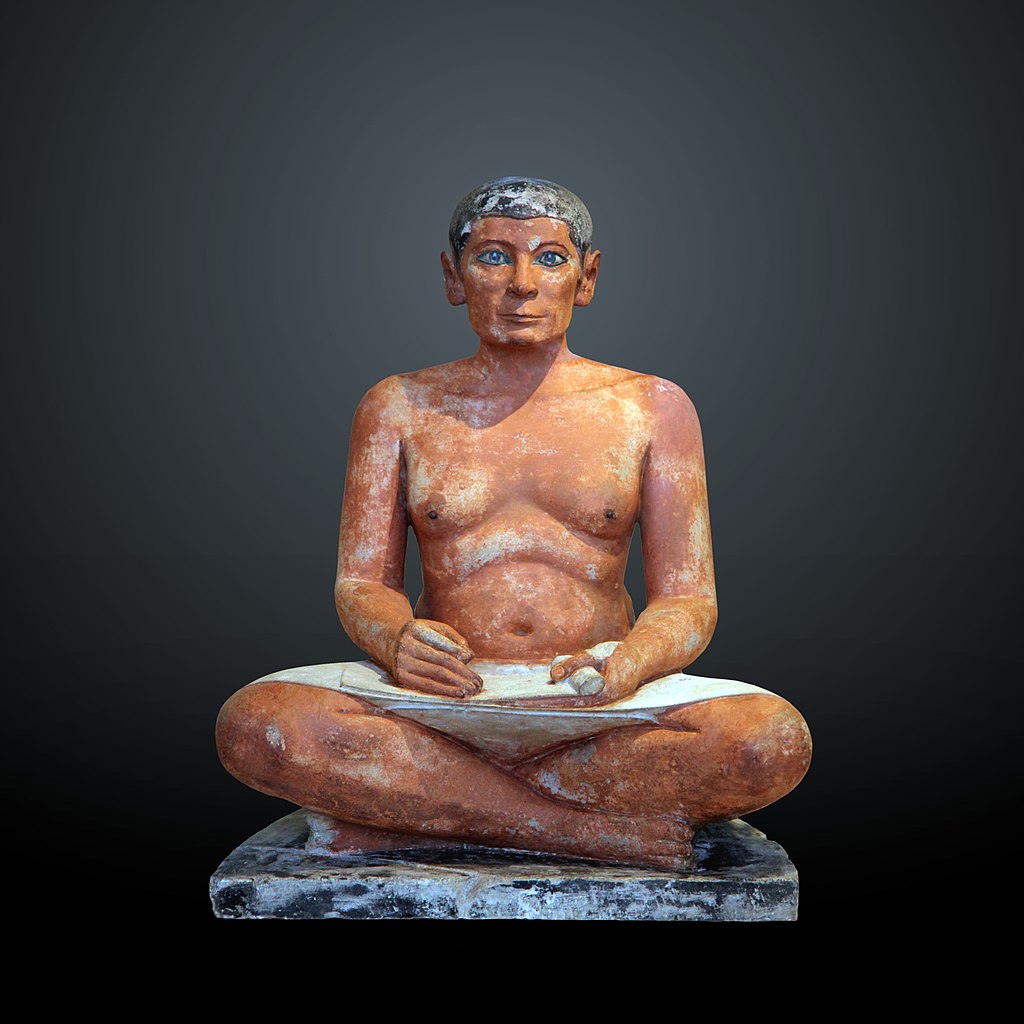This sculpture of the Seated Scribe represents a figure of an Egyptian scribe at work over 4,000 years ago. It is a painted limestone statue with the eyes inlaid with rock crystal, magnesite, copper-arsenic alloy, and nipples made of wood.
The man is dressed in a white kilt stretched to his knees, and he is holding a half-rolled papyrus. His face has realistic features, and his hands, fingers, and fingernails are all carefully modeled.

The papyrus scroll is laid out on his lap. His right hand is in the writing position. At some distant time in the past, he was holding a reed-brush that now missing.
The scribe sits in a cross-legged position that would have been his natural posture for his work. The eyes of the sculpture are modeled in detail using pieces of red-veined white magnesite.
His eyes were elaborately inlaid with pieces of polished truncated rock crystal. The backside of the crystal was covered with a layer of material which provides the color to the iris and serves as an adhesive.
Two copper clips hold each eye in their place. His facial expression is alert as he looks to the viewer waiting for the words for him to record.

This sculpture was discovered in 1850 at Saqqara, an ancient burial ground in Egypt, serving as the necropolis for the Ancient Egyptian capital, Memphis.
Many pharaohs would have their servants depicted in some form so that when they went to the afterlife, they would able to use their skills to help them.
This scribe was one of the very few Ancient Egyptians who knew how to read and write and was highly regarded and well-paid. Scribes were used for a multitude of things involving everyday Egyptian life.
Scribes were used as tax collectors and were in charge of organizing people for building, mining, trade, and war. Scribes were also used to work on projects like pyramid building and helped with communication between the rulers and the Egyptian people.
Scribes in Ancient Egypt
One of the essential professionals in ancient Egypt was a person educated in the arts of writing and arithmetic. Sons of scribes were brought up in the same tradition, sent to school, and inherited their fathers’ positions upon entering the civil service.
Much of what is known about ancient Egypt is due to the activities of its scribes and the officials. Monumental buildings were erected under their supervision.
Scribes documented administrative and economic affairs, and stories from Egypt and foreign lands survive due to scribes putting them in writing.
Scribes were considered part of the royal court, did not have to pay taxes, and were exempt from the heavy manual labor. The scribes worked with the painters and arts who decorated buildings with scenes, images, and hieroglyphic text.





